Zawiązywanie przyjaźni z językiem Elm
Trochę o mnie
- 2 lata pracy w angularze
- Rok prowadzenia zespołu
- Pół roku zainteresowania w językach funkcyjnych
Bartosz Szewczyk
Elm

Strong typed

Virtual-DOM
Html + CSS

Reactive functional

Solid paradigm
Redux?
reFrame?
Elm & Javascript?

Separate runtime!
Static typing
well done

Records!
type alias Model a =
{ id : Int
, values : List (Int, a)
, previous : a
, child : List (Int, a)
}No classes?
Algebraic data types
type Action a
= Create a
| Update (Int, a)
| InsertMany List (Int, a)update : Action a -> Model a -> Model a
update action model =
case action of
Create newVal ->
{ model | values = model.values ++ [(model.id, newVal)]
, id = model.id + 1 }
Update (id, newVal) ->
{ model | values =
List.map (update id newVal) model.values }
InsertMany newValues ->
{ model | values = model.values ++ newValues }No null/undefined
type Maybe a = Just a | Nothing
doSomethingWithA : Maybe Int -> Int
doSomethingWithA a =
case a of
Just i ->
someAProcessing i
Nothing ->
someDefaultIntCompiler that helps

Type inferrence!
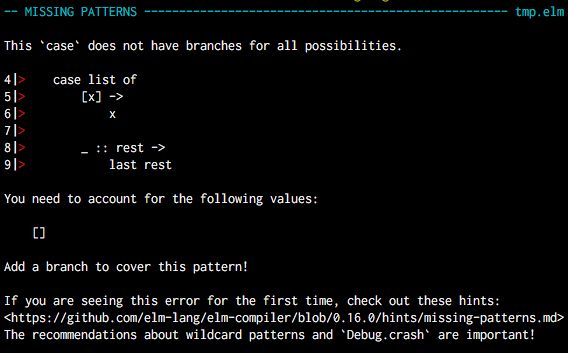
Incomplete cases
anonymous records
hermann =
{ first = "Hermann"
, last = "hesse"
}
isOver 50 person =
person.age > 50
answer =
isOver50 hermannCompiler that helps
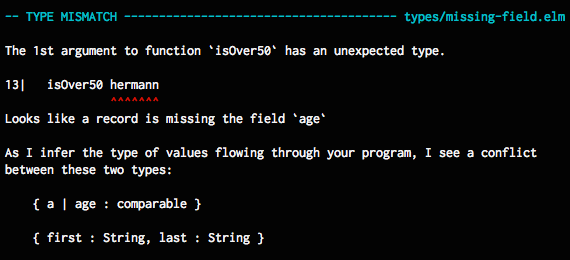
Compiler that helps
- Finding record keys typos
- Finding function names typos
- Detecting Type mismatches
- Detecting different `if` branches results
Blazing Fast HTML
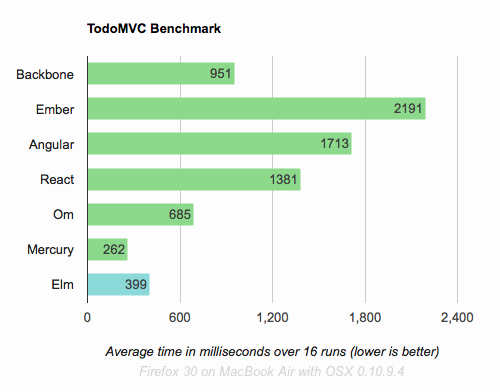
Only stateless components
view: Signal.Address Action -> Model -> Html
view address model =
div []
[ button [ onClick address Decrement ]
[ text "-" ]
, div []
[ text (toString model) ]
, button [ onClick address Increment ]
[ text "+" ]
]functional functions
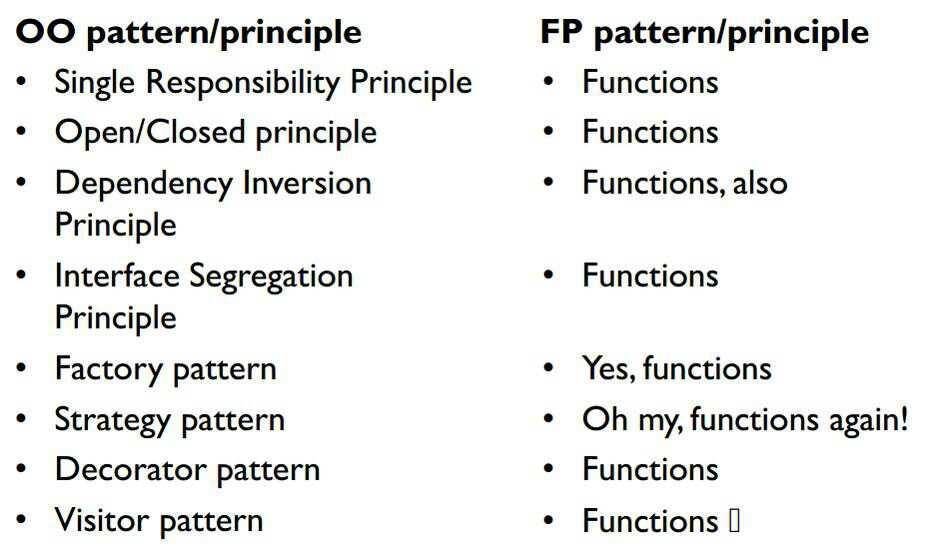
Immutable data structures

two inputs, two outputs
arguments
return
hidden inputs
side-effects

Reactive?

Do you even stream?

bacon.js
kefir.js
RX.js
Enter the signal
Mouse.position : Signal (Int, Int)
Keyboard.presses : Signal Int
Treat like 'array'
filter : (a -> Bool) -> a -> Signal a -> Signal a
onlyNumbers : Signal Int
onlyNumbers = Signal.filter
(\keyCode -> keyCode >= 48 && keyCode <= 57)
48 presses 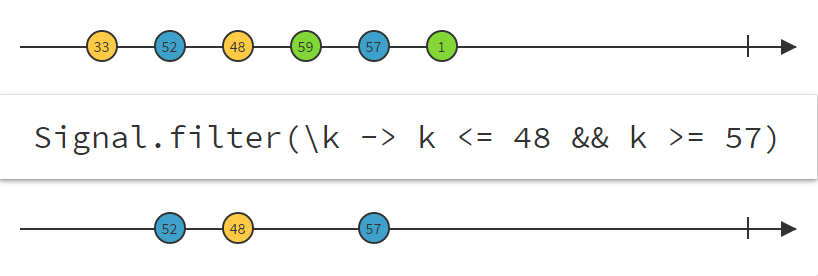
Treat like 'array'
map : (a -> result) -> Signal a -> Signal result
numbersPressed : Signal Int
numbersPressed =
Signal.map (\keyCode -> keyCode - 48) onlyNumbers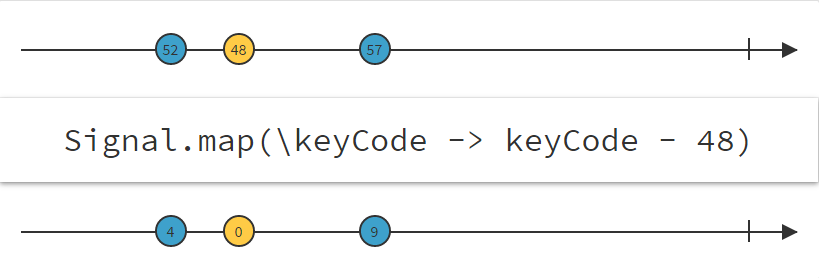
Treat like 'array'
foldp : (a -> state -> state) -> state -> Signal a -> Signal state
sumPressed : Signal Int
sumPressed =
Signal.foldp (\n res -> res + n) 0 numbersPressed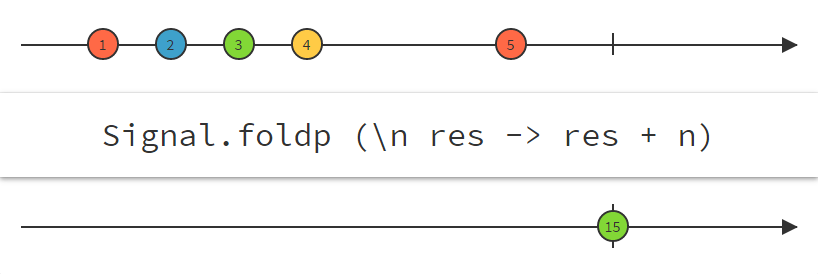
Interactive example
How to rule them all?

One architecture
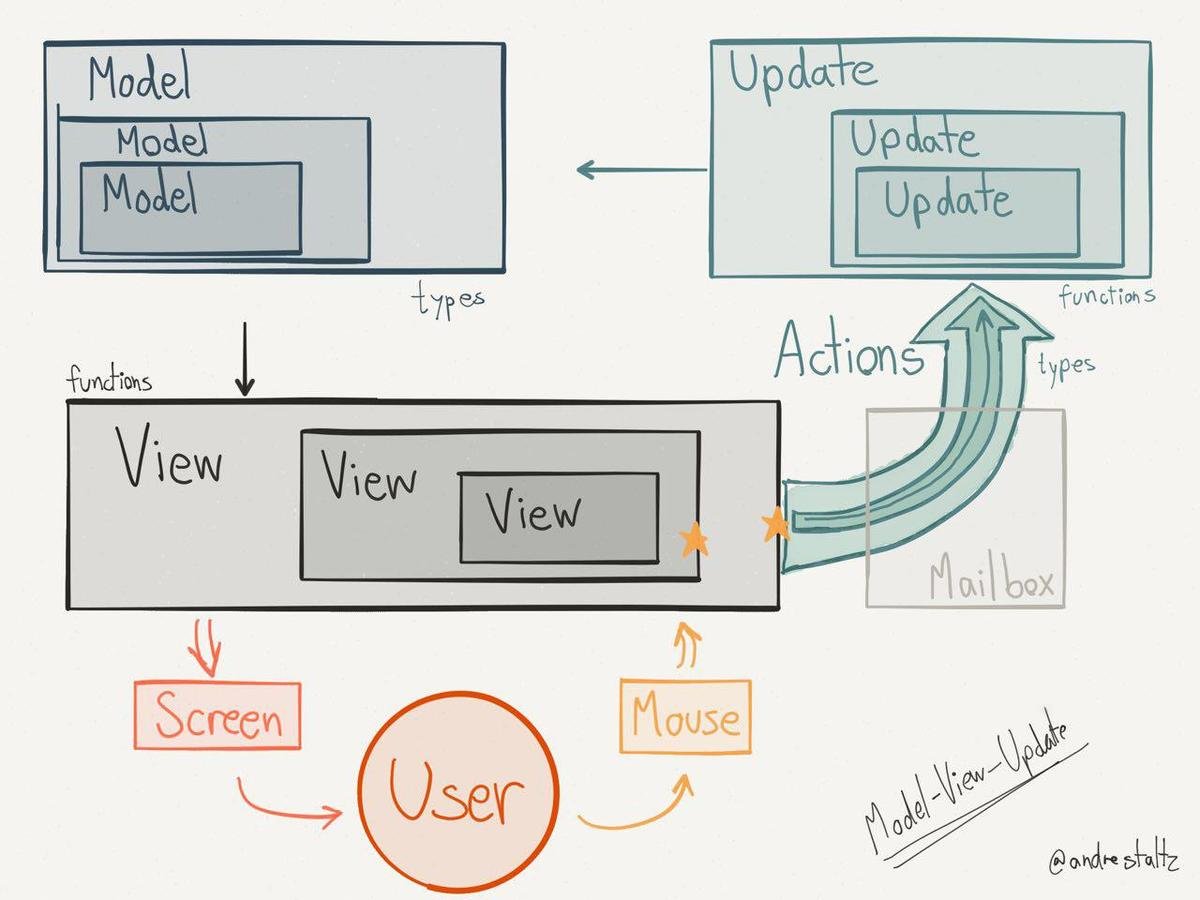
No runtime errors!

Perks
- Everything is kept in Model
- Every action is explicit
- Everything is static typed
- Everything is modular
Fractal
SuperComponentC.elm
SubComponentA.elm
SubComponentB.elm
C
B
A
view
model
update
view
model
update
Using elm
// embed our Elm program in <div>
var app = Elm.embed(Elm.Stamper,
document.getElementById('#stamper');
// fullscreen version of Stamper
var app = Elm.fullscreen(Elm.Stamper);
// Stamper with no graphics
var app = Elm.worker(Elm.Stamper);From JavaScript to Elm
port addUser : Signal (String, UserRecord)
Elm port declaration:
From JavaScript to Elm
app.ports.user.send([
"Tom",
{ age: 32, job: "lumberjack" }
]);
app.ports.user.send([
"Sue",
{ age: 37, job: "accountant" }
]);
JS port send:
From Elm to JavaScript
port requestUser : Signal String
port requestUser =
signalOfUsersWeWantMoreInfoOn
Elm port definiton:
From Elm to JavaScript
app.ports.requestUser.subscribe(databaseLookup);
function databaseLookup(user) {
var userInfo = database.lookup(user);
app.ports.user.send(user, userInfo);
}
JS port subscription:
More than enough!


Time travelling debugger
Summary

Pros
- Static typing for concise codebase
- Developer friendly compiler
- Ultra fast virtual dom
- "Restriction proves helpful"
- "State is a result of an immutable past"
-
Scalable maintainable architecture
- Fearless refactoring
- Low learning curve
- Simple tools
Cons
- No server-side rendering
- Elm runtime size (150 KB - 300 KB)
- No support for Google Closure Compiler advanced mode
- No source maps
- "DOM events can be hard (DnD)"
- No higher-kinded functions (no generic map)
Thank you very much
Bartosz Szewczyk
@sztobar

"Once you learn Elm (...), getting things done will be more productive, less indirect, less verbose, more organized. All of the JavaScript developers who I met that learned and used Elm so far have been extremely positive about their experience"
André Medeiros